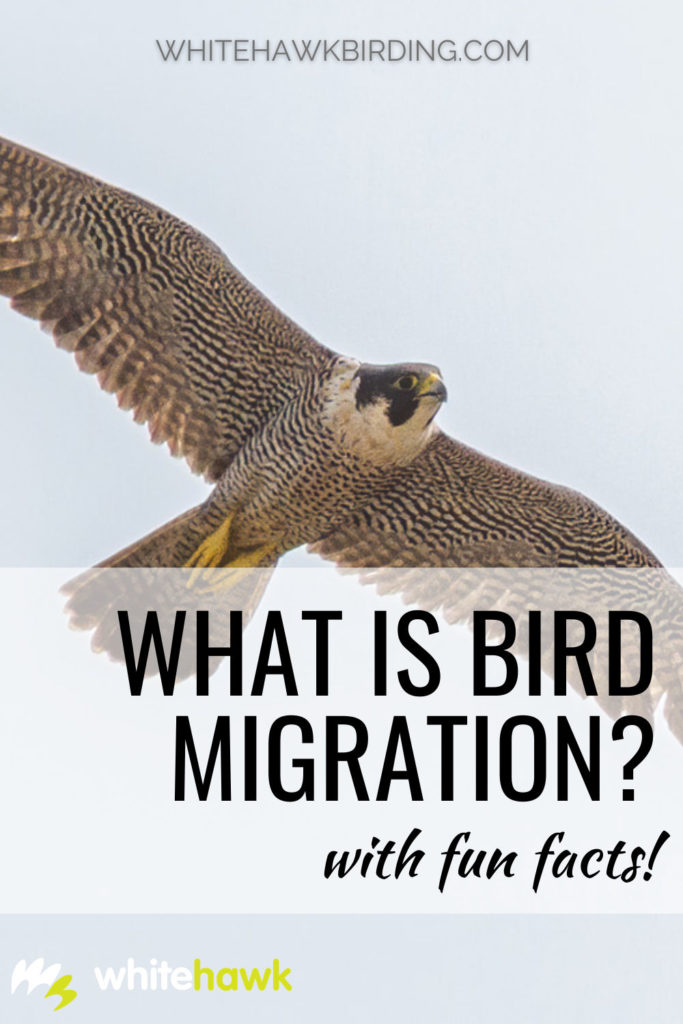It’s that time of year again! Around the world, birds are preparing for their migration from their overwintering grounds to their breeding grounds. But let’s take a deeper look at these bird movements. What is bird migration?
Bird migration is the regular seasonal movement of birds. We may recognize that birds are migrating when bird activity at our backyard feeders change. Perhaps some of the local species are spending more time at the feeders, building up their fat reserves (a behavior called hyperphagia) for the long journey. Or we may begin to notice some different species show up, that we don’t normally see at our feeders. They could be stopping over to fuel up along the way.

Why do birds migrate?
Birds migrate for a few different reasons. For many birds, their food supply diminishes as the seasons change. Birds that feed exclusively on insects in the northern latitudes during the summer will start to experience a depletion of their food in the fall. Many species of birds breed in one place and overwinter in another. Migration is thus necessary to travel between their breeding territories and overwintering grounds. In the Americas, Neotropical migrants breed in the abundant habitats of North America. After the young fledge, they migrate to the tropical environments of Central and South America and the Caribbean. Austral migrants migrate between their breeding and non-breeding grounds in South America.
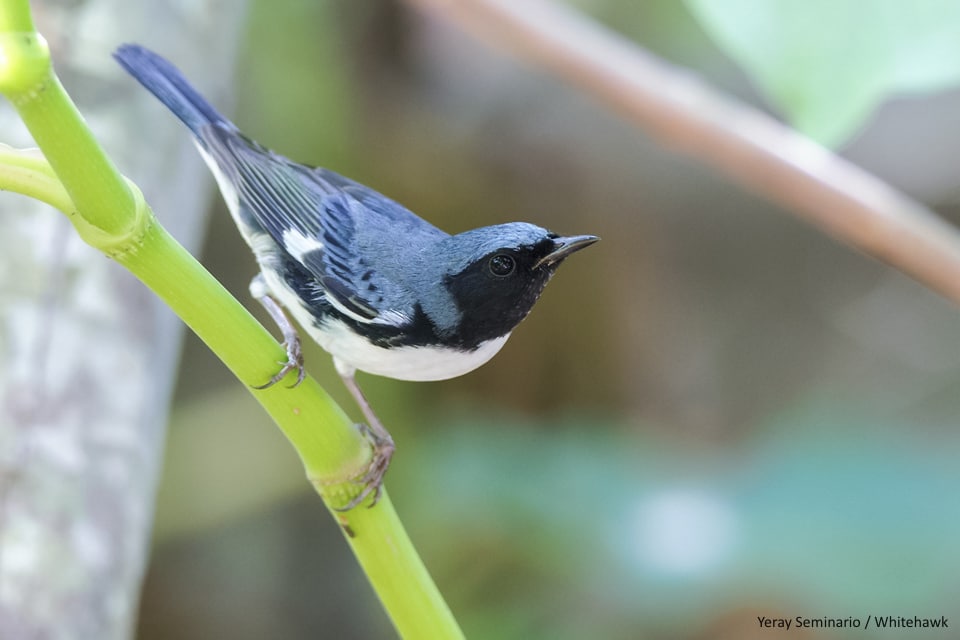
Types of Bird Migration
Latitudinal migration
There are different types of bird migration. Well-known and best-studied is latitudinal migration, where birds migrate from north to south (or south to north) between their breeding and non-breeding grounds. Neotropical migrants breed in temperate North America and migrate to tropical America. They spend the winter mingling with the resident species found in Central and South America and the Caribbean. Austral migrants partake in a usually shorter migration from southern South America to northern South America. A few species even stretch their migration into Central America. Likewise, a similar migration happens in Europe, Africa, and Asia, where we see latitudinal movements of birds over these continents.
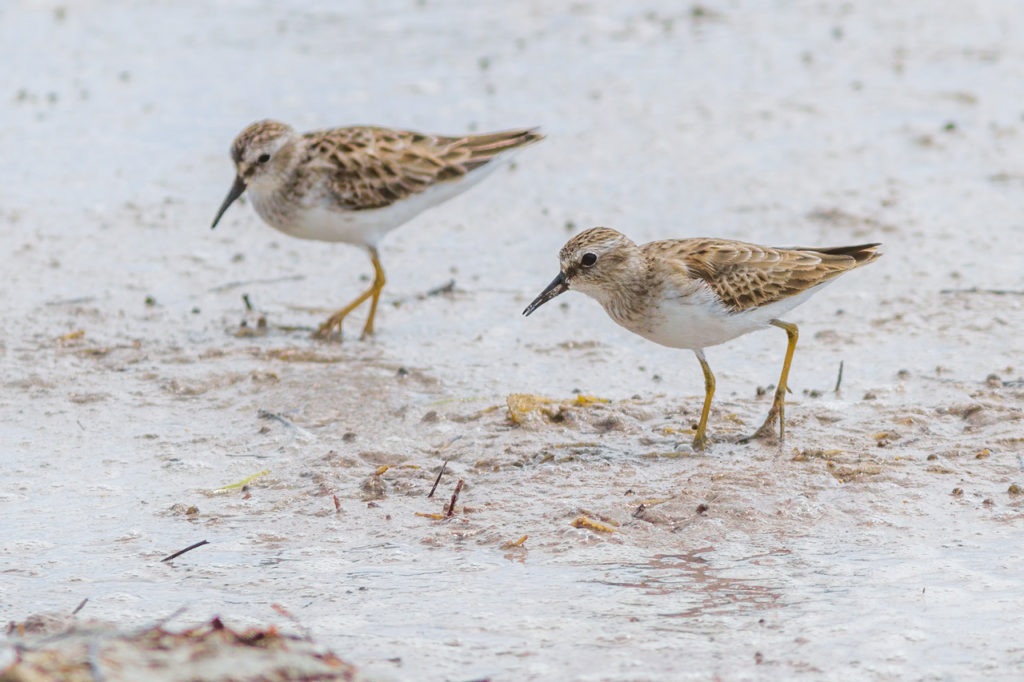
During latitudinal migration, birds such as warblers, vireos, thrushes, raptors, shorebirds, and even hummingbirds breed during the warm summer of the Northern Hemisphere. Here, their key food sources (insects, fruits, small mammals, etc.) are abundant and easy to find. When the season changes, temperatures drop, and this food is not as readily available, so these birds then embark on a journey south. They will overwinter in places where there are abundant food resources and space to accommodate them. Barn Swallow, Red-eyed Vireo, Yellow Warbler, Scarlet Tanager, and even the tiny Ruby-throated Hummingbird are a few examples of latitudinal migrants.
Altitudinal migration
Altitudinal migration is not as common but has the same principle as latitudinal migration. But instead of moving over great latitudinal differences, altitudinal migrants move short distances from montane regions to lower elevations outside of their breeding season. This is usually triggered by food abundance. It is recognized in some species in the Neotropical region including the Andean Condor, Resplendent Quetzal, Three-wattled Bellbird, Bare-necked Umbrellabird, White-ruffed Manakin, and Violet Sabrewing.
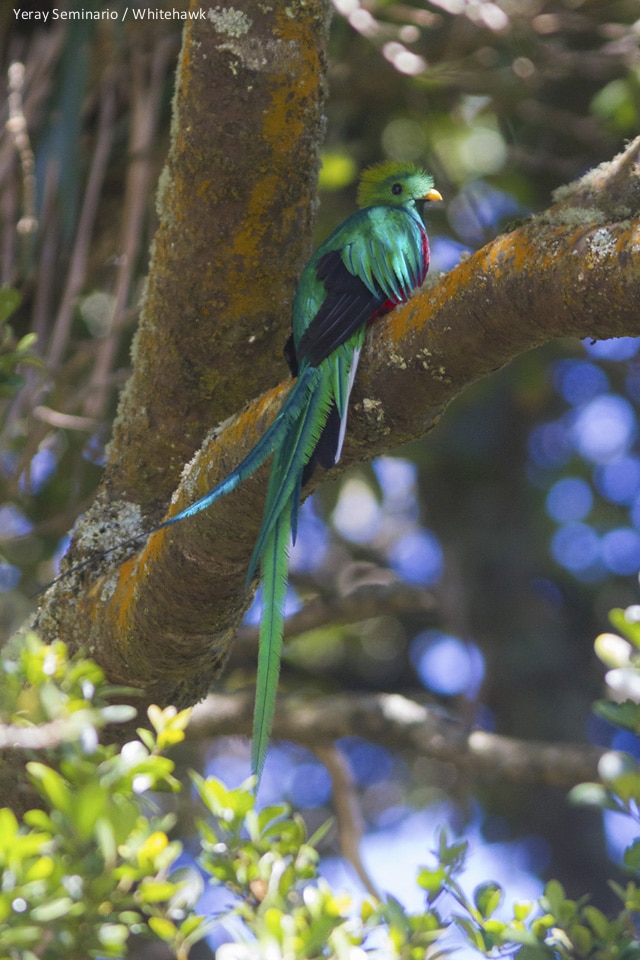
Irruptions
Birds of the Arctic tundra and northern boreal forests engage in irruptions. Their short, irruptive movements occur due to significant changes in seed crops and prey cycles – once again these movements are related to the abundance of food. In northern latitudes, climactic conditions can affect the production of pinecones and other seeds.
Some years, the trees and plants produce abundant seed crops, suitable for birds such as siskins, redpolls, grosbeaks, waxwings, and nuthatches to feed year-round. However, during some winters in the high north, dramatic crashes of these seed crops occur, leaving no food around for the birds. To find food, they must move south. These birds end up overtaking fields, trees with berries, and backyard feeders, sometimes in great numbers! These irruptions can typically be predicted and often spark many birders in the cold North American winters to head out to see these northern species.
Northern owls, such as Snowy Owls, Great Gray Owls, and Northern Hawk-Owls are known for irruptions as well. Some species (Boreal Owls, Great Gray Owls, and hawk-owls) move south when food is scarce, much like the finches. But curiously, others, such as Snowy Owls and Northern Saw-whet Owls, tend to irrupt to lower latitudes when the food availability (such as lemmings and voles) has been high during their breeding season. With more young owls born during years of high food abundance, there is more competition when winter comes, and food is less available. For this reason, many young owls migrate to lower latitudes, scattering themselves over the continent and delighting birders far and wide.
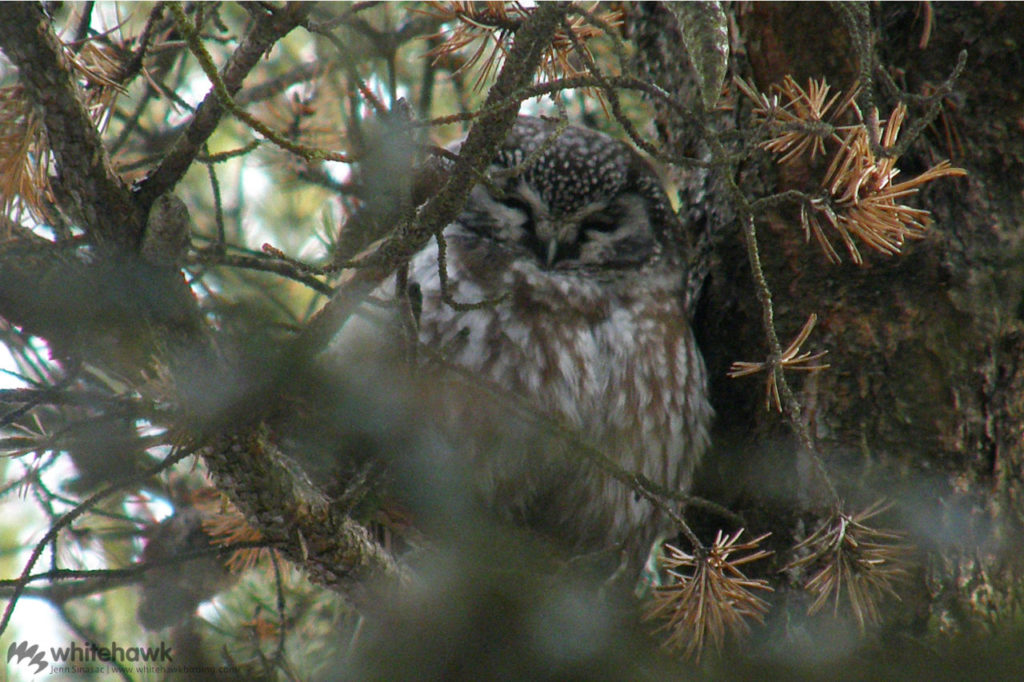
Seasons, Routes, and Maps
In the Americas, birds generally migrate in the spring and fall. Of course, it is customary to refer to these seasons as “spring migration” and “fall migration.” They refer to the latitudinal migration that hundreds of species make each year. Typically, when the length of the day starts to shorten, and the temperature starts to drop, we’ll start to expect some migration. Depending on where you live, the fall migration season spans August to November. Different birds migrate at different times in the season. At a popular raptor migration hotspot in southern Ontario, Canada, American Kestrels, Sharp-shinned Hawks, and Broad-winged Hawks pass through primarily in September. They are followed by Cooper’s Hawks, Red-tailed Hawks, and Turkey Vultures in October, then the large Golden Eagles migrate through the site in November. Some birds, like Peregrine Falcons, trickle through over a few months.
Migratory routes
There are several major migratory flyways across the globe. They are zones where annual bird migration is concentrated and contain several key migration hotspots. Bird migration routes vary from species to species. Some birds are incredibly faithful to their migration routes. You may even have the same individuals passing through your backyard each year! Most birds follow a route southward in the fall, then migrate north along a different route in the spring. For example, the Rufous Hummingbird migrates from Alaska to Mexico and Central America every year. It heads south in the fall through the interior of the continent. Mountain wildflowers provide them some food along the way. They return to their northern breeding grounds by following a coastal route.
Many birds, such as raptors, migrate by vision, recalling natural and manmade landmarks along the way. Songbirds, on the other hand, migrate primarily at night. They use the constellations and the earth’s magnetic field to follow their migration routes.
Scientists create traditional bird migration maps through data collected primarily by visual observations and bird banding. Now, advanced technology such as radar systems, satellite tracking, and geolocators can enhance these maps. We now have the ability to transform those old bird migration maps, which depict migration with differing sizes and colors of arrows, into highly dynamic, interactive tools for learning more about bird movements and migration. Cornell Lab of Ornithology and eBird recently developed a new way to look at bird movements. Abundance animations give us a real visual of the annual movements and migratory pathways at weekly intervals of over 800 species. Check it out here.
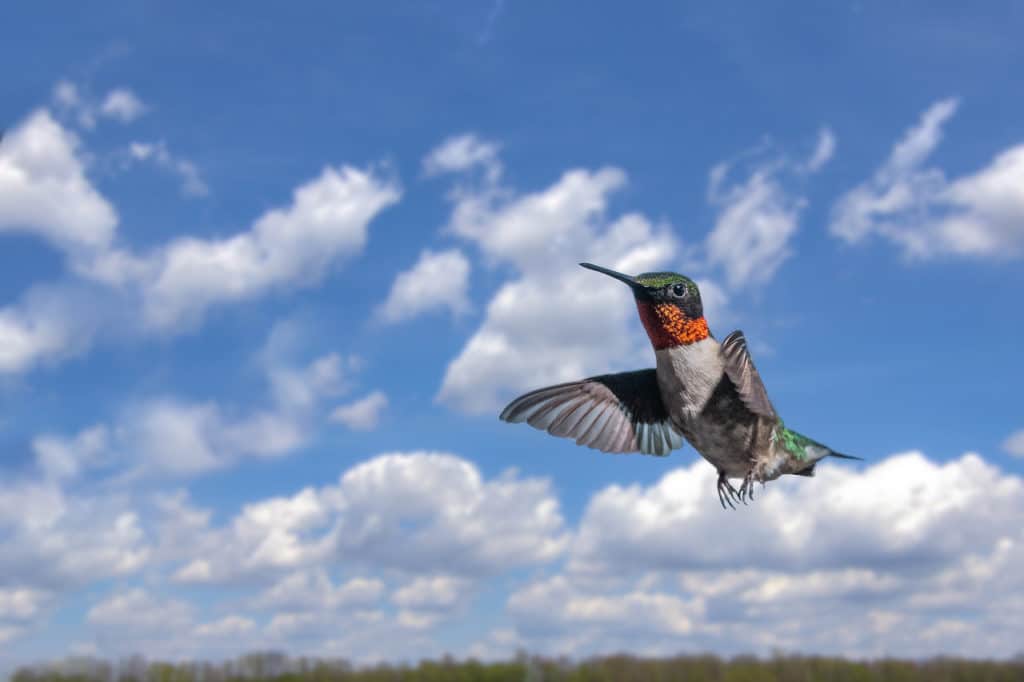
Bird Migration Facts
Four-thousand species of birds, about 40% of all birds on Earth, have regular migrations. Let’s take a look at some of the amazing bird migration records around the world.
Longest migration: Arctic Tern, from the Arctic circle to Antarctic waters and back. This is a total journey of nearly 50,000 miles per year! Considering an Arctic Tern can live over 30 years, this small seabird migrates unfathomable distances in its lifetime, equivalent to 3 trips to the moon and back! The Bar-tailed Godwit holds the record for the longest non-stop flight, traveling nearly 7,000 miles without stopping.
The tiny Ruby-throated Hummingbird of eastern North America has the most studied and best-known migration of any hummingbird. It makes an annual migration from its breeding grounds in eastern North America to the tropical habitats of Central America. What’s amazing, some individuals make a non-stop flight across the Gulf of Mexico and the Caribbean Sea. They can fly up to 24 hours straight in the air, a seemingly impossible feat!
When birds migrate, they can reach flight speeds equivalent to what we drive on the highway. The Great Snipe flies 60 mph for nearly 4,200 miles, making it the fastest migrating bird in the world.
Highest migrating bird: The Bar-headed Goose migrates at inconceivable heights, flying over the Himalayas and reaching altitudes of 5.5 miles above sea level!
Not all migrating birds do it by flying! Flightless birds, such as emus and penguins, migrate distances on foot and by swimming.
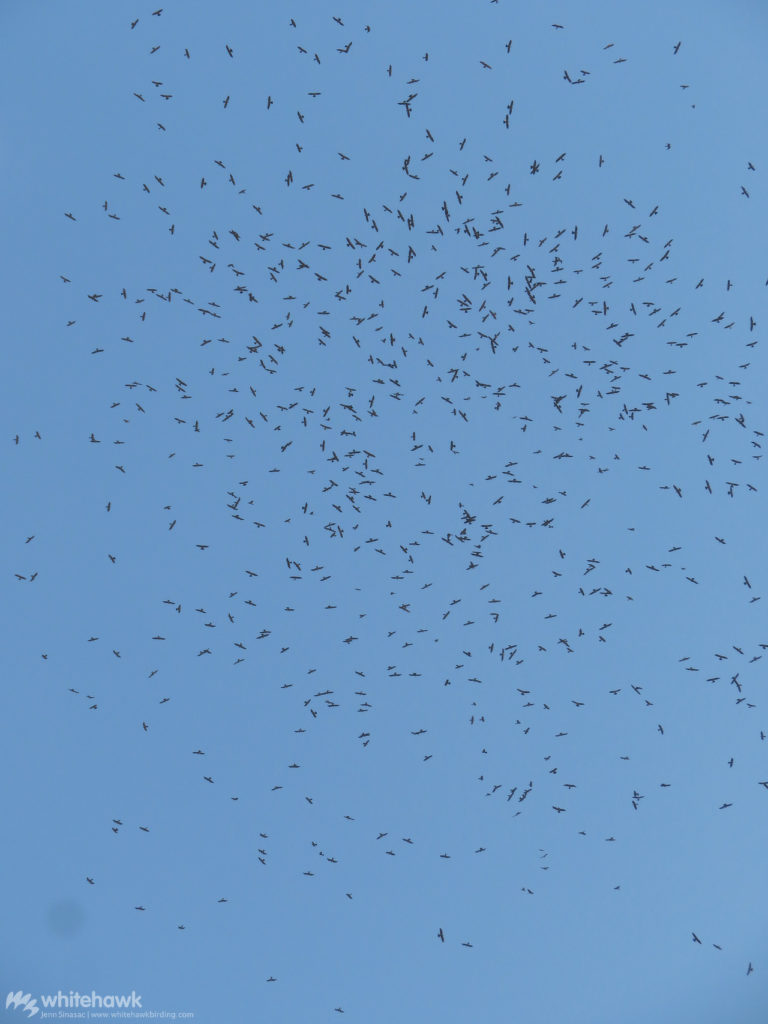
Where to watch bird migration?
In North America alone, there several well-known places to watch bird migration in action. But not all bird migration hotspots are equal! Some feature the colorful warblers and songbirds arriving from their overwintering grounds in the spring (Magee Marsh, Ohio and Point Pelee, Ontario). Others captivate birdwatchers in the fall with superb numbers of birds (Cape May Bird Observatory, New Jersey). Some places dedicate their efforts to the migration route of a certain species of bird (crane migration in Bosque del Apache, New Mexico, for example). Others focus on specific avian groups such as raptors (Hawk Mountain, Pennsylvania). Heading further south, Veracruz in Mexico is the number one site in the world to witness the spectacle of raptor migration. Panama sees hundreds of species of songbirds, raptors, and shorebirds pass through the isthmus every autumn.
Europe, Africa, and Asia also experience spectacular migration, much like North America. The Strait of Gibraltar and Eilat in Israel are two sites reknown for their amazing annual raptor migration events.
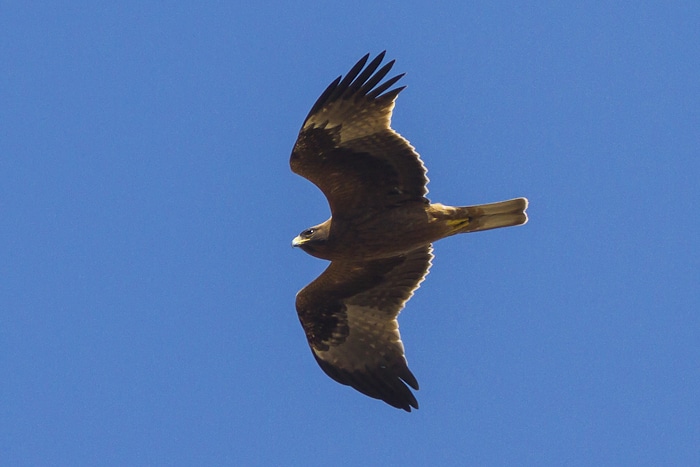
Threats birds face when migrating
While millions of birds successfully make their migrations year after year, migration is a risky and dangerous journey. Inclement weather and natural disasters can get in the way of a bird’s migratory route. However, human-related threats pose even more serious consequences for migrating birds. Collisions with windows and buildings are responsible for the deaths of one billion birds annually in the United States alone. As renewable energy becomes more popular, wind turbines seriously affect birds (and other animals, such as bats, too) when migrating. While birds may collide directly with the large rotating blades, even the disruption of the wind currents around wind energy fields can severely affect migrating birds, especially since they are typically installed along natural bird migratory routes.
There are even more threats to birds during their migration. Dirty bird feeders can spread disease to migrating birds. Outdoor cats are responsible for the deaths of 70 million birds per year. Many birds migrate to areas where pesticides and agrochemicals are widely used, and birds are at risk of ingesting contaminated seeds, plants, and other animals. It is obvious that we need to raise awareness to help birds with their migration.
How can I help raise awareness about bird migration?
You can get involved to spread the word about bird migration and threats to migrating birds! International Migratory Bird Day, focusing on the amazing bird migration in the Americas, started in the United States in 1993. Taking awareness to a global scale, World Migratory Bird Day started in 2006. Both initiatives hold annual events and are designed to raise awareness about bird migration, threats, ecological importance, and current and future conservation projects. Birding festivals, educational programs, exhibits, and excursions take place every year to promote awareness. As bird watching is the number one hobby in the Americas, these events are very popular and attract thousands of people, from novice birdwatchers to experienced and professional birders. Get involved, find a migratory bird event, and discover creative ways to educate people about bird migration at worldmigratorybirdday.org.
To discover more about bird migration through our environmental education resources, click here.
Interested in seeing migratory birds in action? Panama is one of the best countries in the Americas to experience bird migration. The narrow “land-bridge” connecting North and South America is a natural flyway for migrating birds. Spain also holds migration magic, as birds fly across the Strait of Gibraltar to and from Africa. Contact us for more information about migration-focused birding tours.
~ The Whitehawk Team

